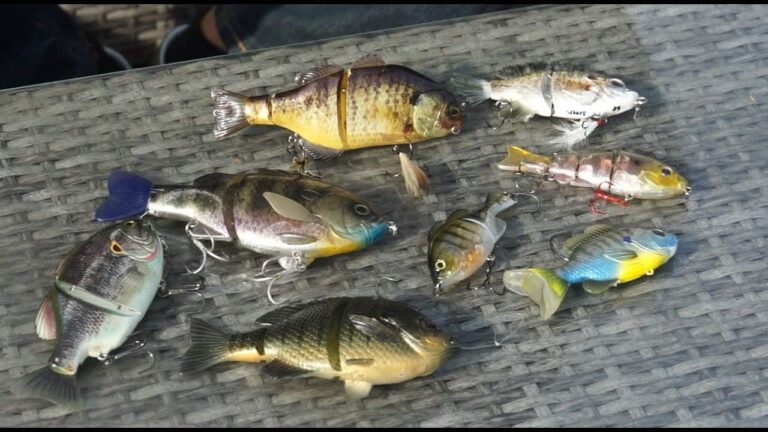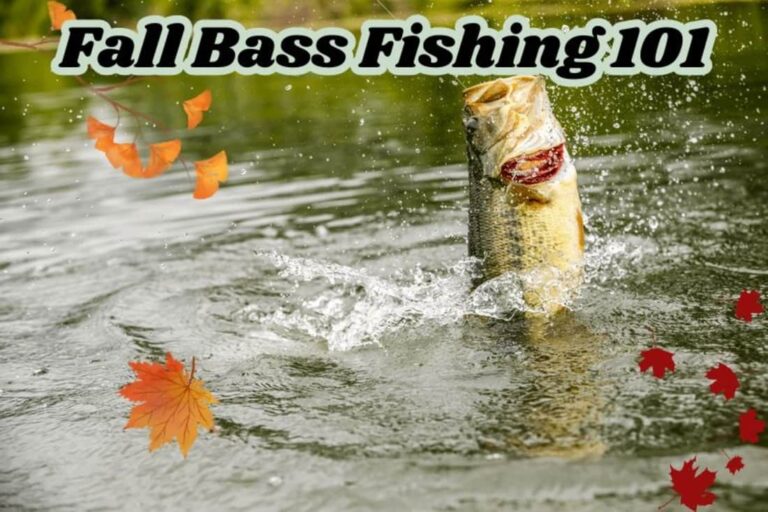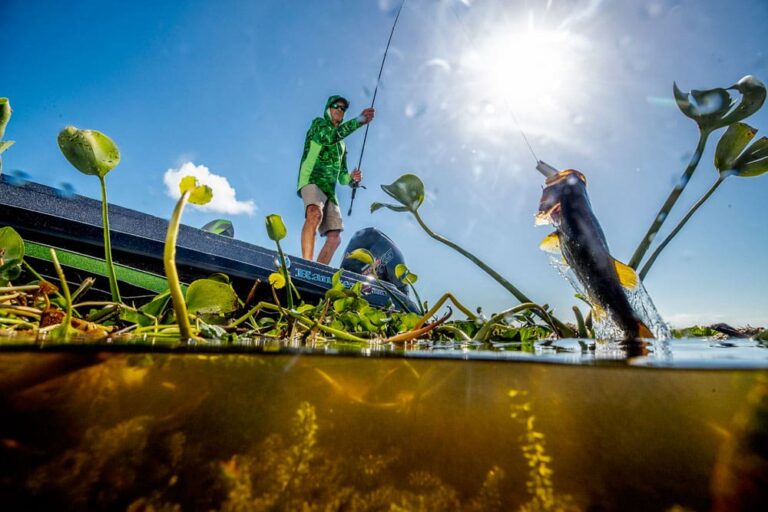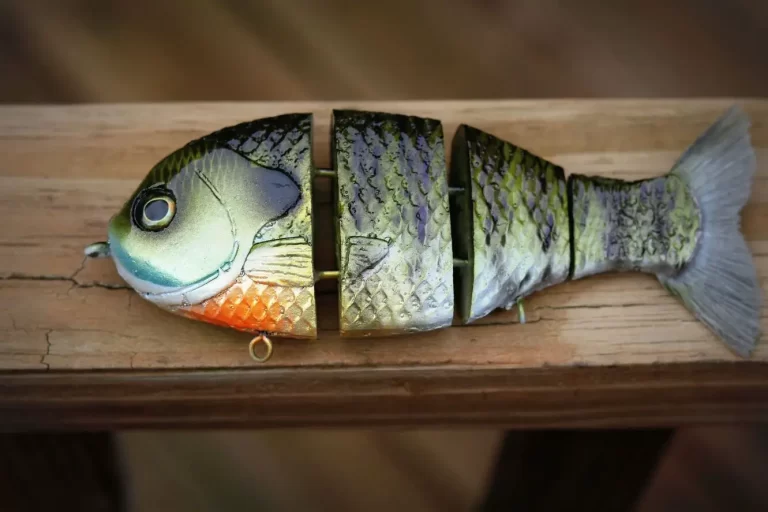Bass Fishing After a Rain Storm
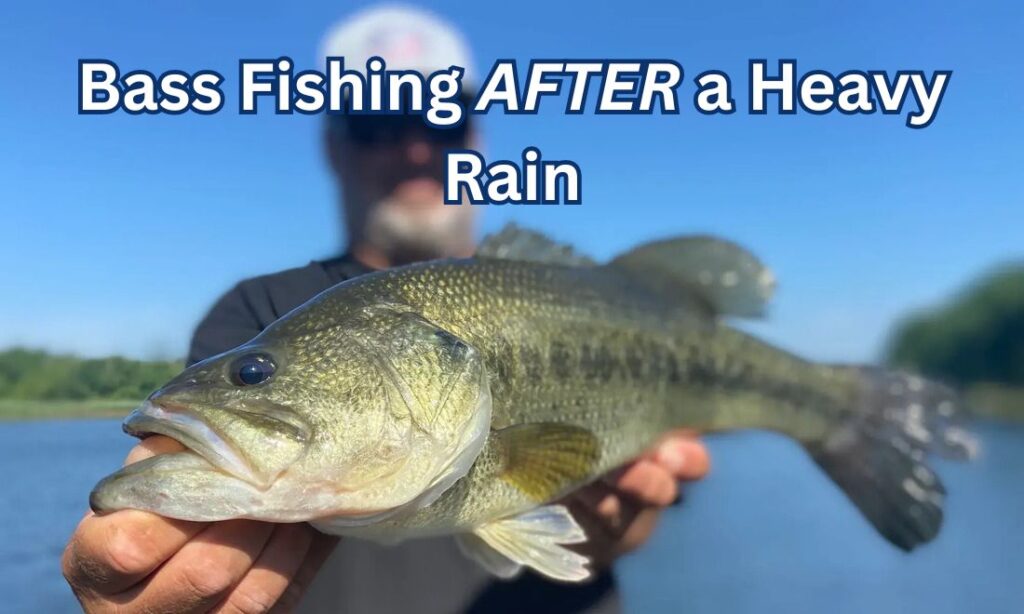
Ahhh. The heavy rain storm has passed and you can finally get out on the water and do some fishing.
But how did that rain effect the bass? And how should you adjust your fishing techniques?
These types of questions need to be answered and understood to have lots of success when bass fishing after a rain storm.
Type of Rain Storm We are Discussing
It’s very important that I specify the exact type of rain storm.
Different types of rain will have very different effects on the bass, and in turn, the bass fishing.
So for the purpose of this article, I am talking about heavy rains and storm systems.
Heavy Rain Storm
Although there isn’t an exact definition for a heavy rain or storm system, we all kind of know it when we see it.
Think of 1-3 days of very heavy rain, a temperature drop, and thick clouds 24 hours a day.
This is what I will be talking about in this article.
Briefly: Light Rain
Generally speaking, a light rain doesn’t have much effect of bass fishing.
During the summer, it will usually make the fishing a bit better, both before and after the rain.
But because just a light rain, the effects are very minimal.
Effects of a Heavy Rain Storm
Also Read: Bass Fishing IN the Rain
Barometric Pressure Rises

Barometric pressure is essentially how much atmospheric pressure is pushing down on us at any given time.
After a big storm front rolls out, this pressure rises very quickly, and usually peaks 1-2 days after the rain storm passes.
This rise in barometric pressure is generally quite bad for fishing. The bass get pushed down farther in the water column and lose much of their appetite.
Because us humans are very big, we don’t really notice these pressure changes, but fish, which are much smaller, are greatly effected by them.
This high, and rising, pressure makes the bass sluggish and harder to catch.
Water Becomes More Muddy
A heavy rain storm will wash tons of dirt, pollen, and other debris into the water, as well as stirs up the sediment that is on the bottom of the water.
This clouds up the water quite a bit and greatly reduces visibility.
However, the water out in the deeper parts of the lakes will not be changed much.
This water is too deep and too far off the bank to experience much clarity change.
But if you are fishing in ponds or rivers, a heavy rain is going to muddy up the whole body of water, making it harder for the bass to find your baits.
Bass Are Relatively Full Already
The flip side of this conversation is the pre-storm or pre-frontal conditions.
Bass will feed up a lot during the 1-2 days before the rain storm arrives. Because of this, they simply aren’t as hungry after the storm rolls through.
They ate up plenty of food before the storm system, so now they don’t need to eat much to remain satiated.
Focus On Finesse Fishing
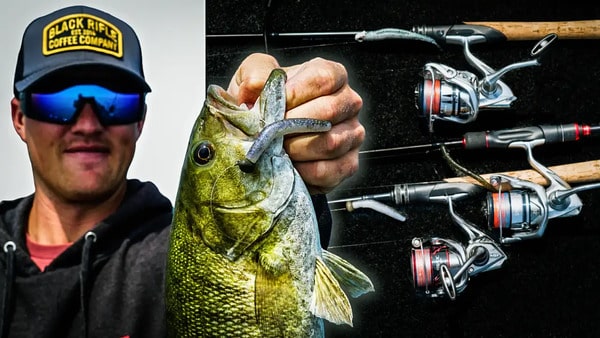
So what does all this mean? How should we approach bass fishing when conditions seem very poor.
The usual solution is finesse fishing. Bass don’t need a big meal, they are closer to the bottom, and they don’t want to chase after fast moving prey.
So the best course of action is to give these bass a super easy, slow moving, and realistic bait that they can’t say “no” to.
Why Finesse Fishing is Best
Like we already discussed, these post-frontal bass are not in the predatory mindset.
For them to eat, they need a smaller, easier meal that is very natural.
A loud crankbait or thumping spinnerbait is not very natural and requires a lot more work to chase after and hunt down.
But small finesse baits retrieved right in front of these bass are easy enough meals that bass just have a hard time resisting.
And with lighter, less visible lines, less hooks and metal hardware, there is less cause for suspicion and concern.
Where to Find Bass After Rain
As I said above, one of the keys to getting these bass to bite is presenting the bait very close to the bass.
And to do this, you need to know exactly where the bass are located. There are two main places to target.
First is creek channels or inlets. Wherever there is incoming water, bass will stack up here.
The heavy rain washes tons of bugs, amphibians, and little baitfish out into the main lake.
Bass feed on this forage as well as on the other baitfish coming to do the same thing.
This disoriented forage is very easy to eat, and is delivered straight to the bass, so they will post up at the mouths of these inlets.
Second is drop off ledges. And more specifically, the first drop off ledges from the bank.
If the water depth around the bank is 2-5 feet, there will almost always be a fairly steep drop off to about 6-10 feet depth.
This is a bit different in small ponds where the depth is very consistent all throughout.
In the ponds, the bass will just be glued to the bottom and spread out around all throughout the pond.
But in larger lakes, the bass will stack up along this first drop off ledge. It gives them the security and extra depth that they prefer after a big storm.
But is also close enough the the bank where they can quickly bounce right back into shallow water as soon as they feel like it.
Best Baits for Post-Frontal Fishing
1. Drop Shot
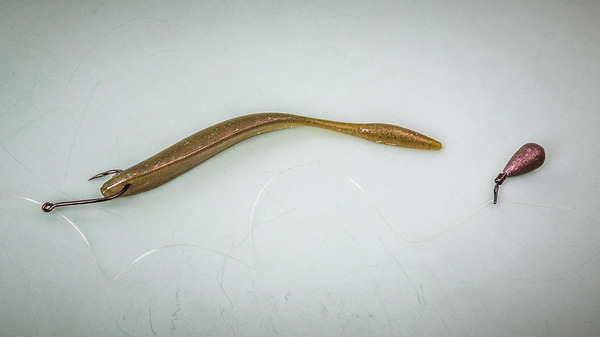
The drop shot is a fantastic rig for fishing those ledges. Cast parallel to the ledge and slowly work the drop shot along it.
The drop shot suspends a realistic soft plastic just off the bottom, and gives a super enticing action to the bait.
2. Wacky Rig
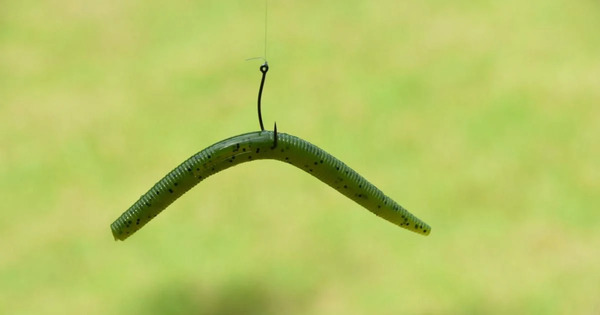
The wacky rig is actually my favorite bait for fishing ponds after a big rain.
Ponds are typically very shallow all throughout, so the slow sinking wacky worm is perfect.
The wacky rig also allows you to cover a bit more water than other finesse rigs.
This can be huge when fishing ponds because like we discussed, there aren’t really any major drop offs or ledges to hone in on.
3. Finesse Swimbait
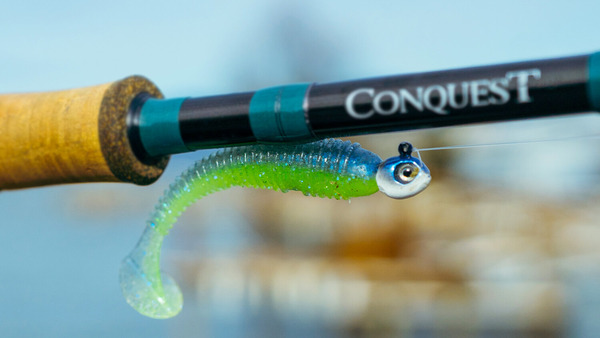
There are a few places where finesse swimbaits shine. First is when targeting those creek channels and inlets.
Here, bass are keyed in on small, moving baitfish. These bass also have a bit more energy because of the highly oxygenated water flowing in.
A little finesse swimbait can cover a lot of water and catch a lot of bass here.
And if the water is very muddy, add on an underspin to give the bait some extra flash and vibration.
But finesse swimbaits also work great for cover lots of water. So slow rolling them along the ledges as well as open, pond water works very well.
4. Full Sized Swimbait

Now, sometimes bass don’t really listen to the conditions as we expect.
Sometimes they are fairly aggressive even after a big rain storm. A full sized swimbait is amazing for these conditions.
Even though the bass may be aggressive, there will be very little wind and bluebird skies.
That means water visibility is high, especially in deeper water where the rain doesn’t muddy it up very much.
Because of the high visibility, a realistic swimbait is a super natural presentation that won’t raise any alarms.
5. Popper
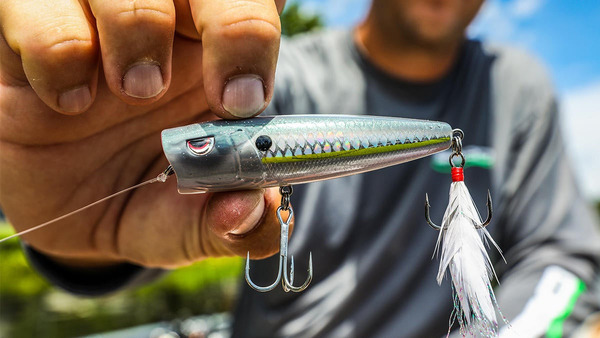
Pretty much every list of baits needs at least one topwater. And the popper seems to work the best after a big rain.
In shallow, muddy water the popper makes a lot of surface commotion which helps the bass find it much easier.
Also, because of the cupped mouth, you can work the bait very slowly and give the bass time to find it.
I don’t throw a topwater much after it rains, but when I do, I throw a popper.
When to Switch Back to Power
So when do you switch back to power fishing? Or more accurately, when do the effects of the rain stop effecting the fishing?
2 Days
Most of the time, 2 days is about the extent of a big rain’s effect.
By the third day after the rain stops, bass have pretty much returned to their normal habits, and your fishing approach should do the same thing.
If You’re Catching A Lot of Bass
Bass are very unpredictable. Even if all the signs point to them being sluggish or hard to catch, they don’t always listen to those signs.
Even if it is the first day after a heavy rain. If you are finesse fishing and notice that you are catching tons of bass, or the bass you are catching seem very aggressive.
Try switching to more power fishing techniques. Worst case scenario, you just switch back to finesse.
Reeling this In
After a heavy rainstorm, fishing conditions can change significantly due to shifts in barometric pressure, water clarity, and fish feeding patterns.
To improve your chances of success, it’s important to adjust your techniques accordingly.
Focus on finesse fishing, using methods like drop shots, wacky rigs, finesse swimbaits, and poppers, which are better suited for fish that are less active and feeding less aggressively.
Look for fish in areas such as creek channels, inlets, and drop-off ledges where they are likely to gather.
Generally, within two days, fish will start to return to their normal behavior, allowing you to switch back to more traditional fishing techniques.
Stay adaptable and responsive to the conditions to enhance your fishing experience after heavy rain.

